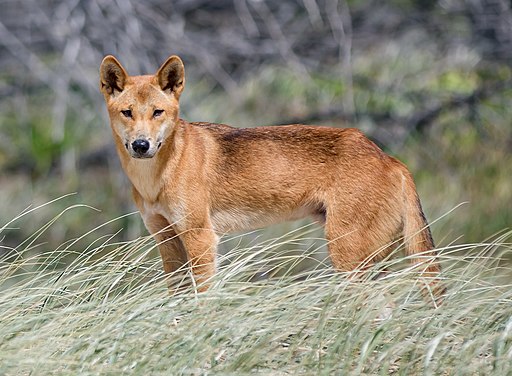Grampians farmers are angered with a proposal that would re-introduce dingos to areas that currently have livestock grazing.
A 15-year draft plan created by Parks Victoria and three groups of traditional owners to guide the Grampians’ management –
known as Gariwerd to its custodians – was released in November and contained a proposal to restore “locally extinct and culturally significant wildlife” such as the dingo and the quoll.
The report outlines the use of dingoes to control pest species and an over-abundant population of kangaroos and wallabies.
The Age Reported“There are, however, many unknown interactions or outcomes that may result from their reintroduction to the existing state of ecosystems,” the plan reads.
“The re-establishment of dingo or dingo-hybrid populations in the greater Gariwerd landscape has the potential to cause community concerns due to possible conflicts with grazing. Programs for the re-introduction of dingoes have also been raised by other traditional owner groups in other parts of Victoria and are being investigated.”
The idea has been fiercely opposed by some of the local farmers, who believe the re-introduction of the predator could threaten their livestock and hurt the multimillion-dollar livestock and wool industry.
Local farmerJohn Crawford has started a local petition that has gained 800 signatures online.
“In the local community, no matter where I walk, everyone is horrified. Most people thought it was a hoax, that it wasn’t fair dinkum,” Mr Crawford said.
The 65-year-old believes the issue is creating a rift between the rural community and Parks Victoria, and is worried about the impact it could have on tourism.
“They’ve just spent millions on a walking track from Dunkeld to Halls Gap, which is going to be a brilliant track, and to see all the Aboriginal culture which is fantastic, I think,” he said.
“But no matter who I talk to, they say, I’m not walking in that park with dingoes.”
“From a farming point of view to an economic point of view, to the state, and for tourism … I’m hoping common sense will prevail.”
Euan Ritchie, an associate professor in wildlife ecology and conservation at Deakin University, said the concerns of farmers were legitimate. However, he believes there could be a range of ways to minimise the risk to livestock.
“I do think it’s a legitimate concern that dingoes do pose a risk to sheep, goats and other livestock, but we also have to be respectful of the wishes of Indigenous and traditional owners who want to have dingoes back on country,” he said.
“Traditional owners recognise the issues posed by the potential reintroduction. They themselves say they don’t want to disadvantage livestock graziers. But we need to think about the concerns and wishes of multiple people in the community.
“Everyone is aware this is an ambitious proposal and one that poses risk and needs to be carefully managed, but the most important thing is we come together and discuss the concerns and use the best evidence to address those.”
He said dingoes which were neutered and GPS-collared could be monitored to make sure they weren’t causing damage to livestock, and strategic fencing could be introduced.
But Mr Crawford said it wasn’t realistic to use fencing to try to control dingoes: “That’s out of the question and the cost is ridiculous to think you could fence it in.”


0 Comments